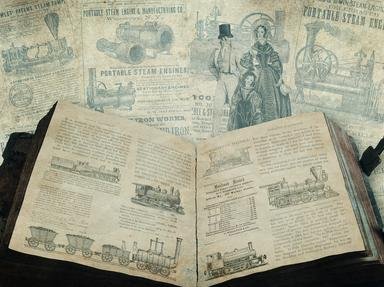Quiz Answer Key and Fun Facts
1. The lake provided an obvious activity that was part of each day - swimming lessons. While most lessons emphasized developing technique, there were also occasional competitions. Which of these strokes we practiced in class were we LEAST likely to use when racing?
2. Once campers had passed a swimming survival test, they could participate in boating activities. The most exciting of these was canoeing, because achieving a necessary skill level meant you could participate in all-day explorations of the lake, and then proceed to overnight camping. Most of them were traditional Canadian canoes made of canvas on a wood frame, designed to be used by two paddlers. What name is given to the canoeist who sits at the back of the canoe, and controls its path?
3. The older campers had access to small sailboats, and learned the basics of sailing a triangular course on the lake. The best were chosen to attend inter-camp regattas for competition. We raced in a style of boat called a dinghy, which had two sails. Given that the big one was the mainsail, what name was given to the smaller one at the front of the dinghy?
4. On Sundays, we used to attend a non-denominational service in an area called the Grove, a spot on the hillside looking out over the lake, surrounded by stately examples of Pinus strobus. What name is commonly given to these beautiful evergreen trees?
5. On Wednesday and Sunday evenings, the cooking staff had an evening off, as we made our own sandwiches for dinner. Before we could access the table, however, we had to submit a letter to our parents - ensuring they heard from us at least twice a week. Alan Sherman wrote a song, inspired by a letter his son had sent home from camp, which purported to describe the conditions at what fictitious camp?
6. Summer camp didn't just involve water activities. What game were we playing in the area where this picture might have been taken?
7. Eye-hand coordination was developed through such sports as archery. The targets had five colored rings, with each ring awarding a different score for an arrow that landed there. In such a five-ring target, how many points are awarded for an arrow in the red circle?
8. Everyone participated in at least one mountain-climbing hike each summer. Those who were keen could participate in a three-day hike that involved climbing the highest mountain peak in the state of Maine. What is its name?
9. One of the evening activities at camp was the production of a (VERY amateur) presentation of a musical show. One year, the climax of the performance had the leads climbing across tables on which benches had been piled as they made their way to the staircase leading to the second floor of the hall, singing as they went. Which of these characters was involved in that scene?
10. Speaking of singing, one highlight of every week was the Saturday evening campfire. It started with stories, progressed into songs, and finished, when the fire had been reduced to the ideal state of embers, with toasting marshmallows, which were consumed either on their own or as part of what gooey treat?
Source: Author
looney_tunes
This quiz was reviewed by FunTrivia editor
LeoDaVinci before going online.
Any errors found in FunTrivia content are routinely corrected through our feedback system.
